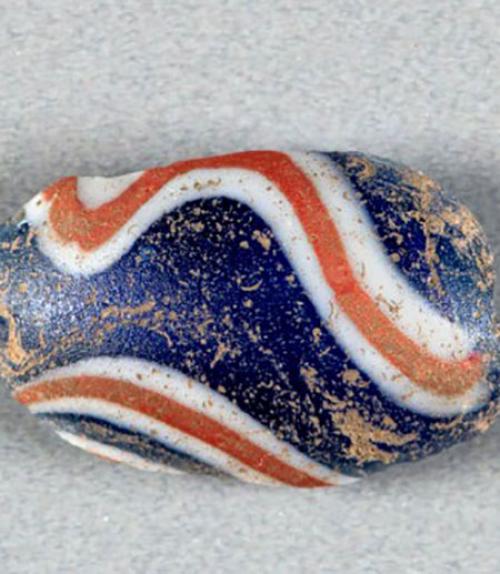Unearthed, digitized and soon to be repatriated, artifacts from two Native American towns are beginning to share their rich stories online thanks to a collaborative project by anthropologists, librarians and Indigenous community members.
The recently launched digital collection – Onöndowa'ga:' (Seneca) Haudenosaunee Archaeological Materials, circa 1688-1754 – features two historical locations – White Springs and Townley-Read, both near Geneva, New York – which were inhabited consecutively by members of the Onöndowa’ga:’ (Seneca) Haudenosaunee (Six Nations Iroquois) after they fled the French military destruction of the town of Ganondagan in 1687.
Various cultural artifacts and the changing layout of the towns show how the communities adapted and thrived in their new environments, according to Kurt Jordan, anthropology professor in the College of Arts and Sciences and director of the American Indian and Indigenous Studies Program in the College of Agriculture and Life Sciences. Jordan led archaeological work at the two locations.
“There’s a misconception common among scholars until recently that, as soon as Europeans arrived, Native people went on a long, slow slide into disappearing and irrelevance,” he said. “But you can really see that there is a ton of Native technology and local plant and animal species that were being used alongside European imports.”
In 2017, Jordan partnered with graduate student Dusti Bridges to highlight these discoveries by starting an online collection, supported by the Grants Program for Digital Collections in Arts and Sciences at Cornell University Library and with earlier seed funding from the Great Lakes Research Alliance for the Study of Aboriginal Arts and Cultures (GRASAC).
The collection, which focused on domestic spaces and does not include sacred objects, is a vehicle for descendant communities to virtually connect with their cultural heritage, according to Bridges, who is completing a Ph.D. in anthropology.
The project will also physically reunite descendant communities with their heritage objects when the original physical artifacts are transferred from Cornell’s Department of Anthropology to the Seneca-Iroquois National Museum in Salamanca, New York. The transfer of materials is scheduled to start next summer.
“Bringing the materials back empowers the Seneca community,” said Joe Stahlman, director of the museum and a consultant on the project. “This becomes an opportunity for the Seneca to contribute to the research but also to show themselves as knowledge holders.”
Community involvement has always been essential to the project. Jordan and Bridges gathered initial feedback from Seneca partners during a meeting at Ganondagan and through consultations with Indigenous colleagues from GRASAC. Questions about language emerged as a major consideration.
“We took out the specialist archaeological language, which could be alienating,” said Bridges. “So instead of using ‘structure’ we used ‘house.’ We used ‘town’ instead of ‘site.’”
Bridges and Jordan are now inviting Indigenous community members to share Onöndowa’ga:’ language terms, and other information about the artifacts, via the feedback forms in the online collection.
To present and collect this abundance of information on the website, the project has depended on the expertise of library staff like Jasmine Burns, visual resources metadata librarian and a proponent of a movement known as critical cataloging practice.
“Institutions are becoming more reflective about the way that they’re describing their collections,” she said, “particularly collections that represent marginalized communities and a diverse audience.”
Burns customized the standard metadata template used for image collections in order to replace colonially tinged terms (such as “discovery site” which was substituted with the neutral term “former site”) while also adjusting the metadata vocabulary so that Indigenous-language terms can be further added, linked and easily searched.
The digitization and the transfer of the physical artifacts are steps toward healing a deep divide, according to Michael Galban, curator for the Seneca Art and Culture Center at Ganondagan State Historic Site and an expert on Native American material culture who also served as a project consultant.
“The unethical practices that took place in the earliest days of archaeological science – including the desecration of burials and the removal of ancestors’ remains – have so damaged the trust between Native peoples and archaeologists in universities and museums,” Galban said. “Kurt and Dusti have been very diligent in repairing that relationship. Every time that a successful project like this is responsibly brought into fruition, it not only helps Native people but also the science of archaeology.”
Jose Beduya is a staff writer, editor and social media coordinator for Cornell University Library.





